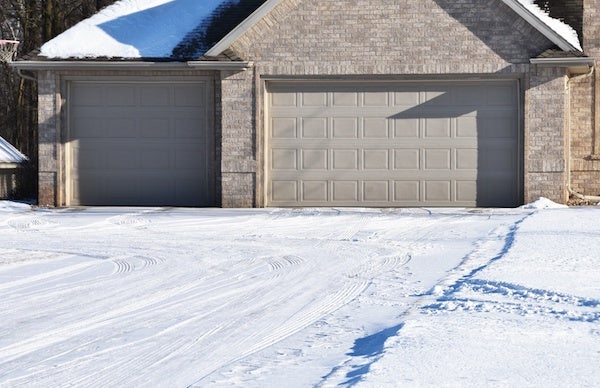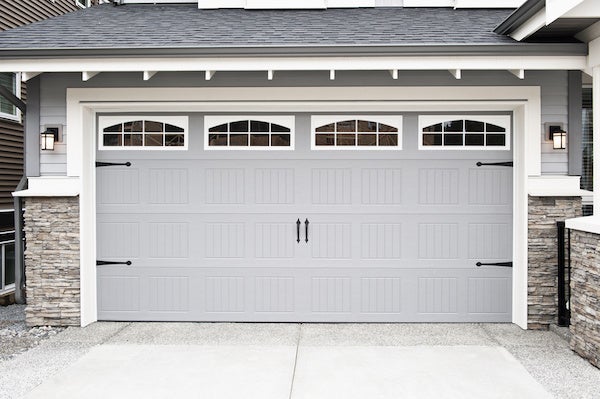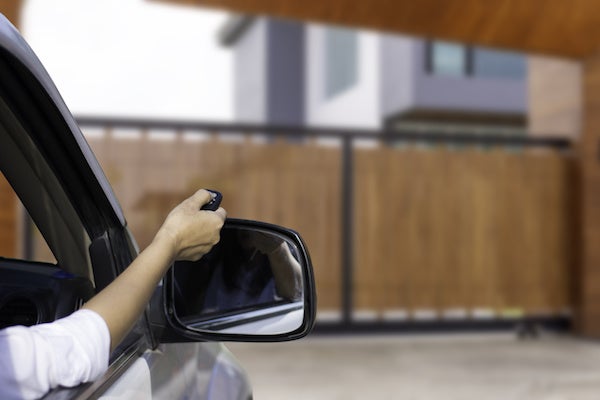-
Maintenance to Get Your Garage Door Ready for Cold Weather

As the weather cools, many homeowners find themselves preparing for winter. Homes are cleaned, and vehicles are serviced. Include the garage door in your home maintenance this year. Below are some ideas for fall maintenance to get your garage door ready for cold weather.
Lubricate
Somewhere in the back of our minds, most of us are aware that garage doors have moving parts and should be lubricated. The reason why doors need lubricant is because moving parts (especially the metal ones) create friction when rubbing together. Increased friction means increased strain on the garage door opener and can lead to mechanical issues. Moving metal parts should be greased every six months with a lubricant designed specially for garage door openers.
Weather Stripping
Weather stripping is a key feature on garage doors. It serves both to protect the garage from drafts and to cushion the door itself. Each year, weather stripping is exposed to harsh conditions such as heat, cold, wind, sun, and rain. Everyday use can also cause wear. Check for areas that are cracked, chipped, or are detached from the door. Repair or replace damaged weather stripping in order to better protect your garage from the elements.
Clean
During the winter, salt and dirt can build up on a garage door, eating away at the finish. Before that can happen, be sure to wash off any existing residue from the garage door. Touch up any areas where the door could use refinishing. Also check the garage door opener and clean any dirty parts, such as the tracks. The onset of winter is also a good time for ensuring the garage itself is clean and organized.
Whether it’s the cooler weather or simply the change of seasons, something motivates people to perform home cleaning and maintenance. Each home feature is important, including the garage door. Avoid costly repairs by maintaining a properly cared-for garage door. Your wallet will thank you. For more helpful information about garage doors, browse the Thomas V. Giel Garage Doors, Inc. blog.
-
How Can an Insulated Garage Door Save You Money?

As the weather cools, many homeowners consider strategies for staying warm while saving money. Insulation is a common decision, often taking the form of double-paned windows, new weather stripping, or actual fiberglass insulation. One area where insulation can be particularly useful is the garage. Below are some ways an insulated garage door can save you money.
Energy Efficiency
Insulation is known to keep warm areas warm and cold areas cold. Walls in homes and garages are often filled with the stuff. The garage door more or less composes an entire wall of the garage, so insulating the door would significantly boost the energy efficiency of the garage as a whole. When the door between the home and garage is open, cold air from the garage mixes with warm air from the house. A warmer, better-insulated garage will bring warmer air into the home. This will lower the home’s heating costs. This principle is also true for air conditioning in the summer.
Secondary Savings
An insulated garage door can also save money by protecting garage-storage items. A car battery, for example, will have a longer lifespan in more moderate temperatures. This is true also for tires on bicycles and lawn mowers. Canned food and other liquids can be stored more confidently in a better-insulated garage. Wooden items, such as garden tools, are easier to maintain in milder conditions. In a well-insulated area, hard plastics like sleds or storage containers are less likely to crack. Additionally, insulated garage doors recoup an average of 72% of their value when the owner decides to sell the home.
Most homeowners actively pursue avenues for saving money. During the cold months, money-saving ideas tend to involve improving a home’s energy efficiency. One major component of a home is the garage. Adding an insulated garage door can increase heating efficiency. Insulated garage doors also offer protection for the garage’s contents, saving money and providing peace of mind.
For more helpful information on garage doors, browse the Thomas V. Giel Garage Doors, Inc. blog.
-
3 Tips for Troubleshooting Your Garage Door Opener

A garage is a convenience which is too often taken for granted. It is easy to forget how much we’ve come to rely on them. We quickly remember, however, if the garage door opener malfunctions. When a garage door opener begins to underperform, there are a few ways to correct the problem on your own. Below are some tips for troubleshooting your garage door opener.
Electrical
Garage door openers are powered by electricity, so there is a possibility that the device is not getting the power it needs. If your opener does absolutely nothing (that is, no noise, no movement,) when the button is pushed, first check the power source. Confirm the garage door opener is plugged in to an outlet and that the outlet is working. To test an outlet, plug another device (such as a night light) into the outlet in question. If the device powers up, it means the outlet is working. Also test any extension cords using the same method, being sure to plug the cord into the power source before testing the output. Voltage readers can also be used. If an electrical issue cannot be solved at the power source, it is best to call a professional for repairs.
Mechanical
The moving parts in a garage door require regular maintenance. Still, mechanical malfunctions can occur. These may include grinding noises, the door or belts off their tracks, and abnormal rattling or jarring. A good first step is to lubricate. Use a designated “garage door lubricant”; WD-40 won’t do the trick here. A spray lubricant will make quick work of cracks and crevices. Be sure to cover the metal joints (including the links of a chain) and springs. Clean inside the tracks using a rag. After lubricating, open and close the garage door a few times to distribute the grease. Since the garage door opener is a complex mechanical system, it’s best to reach out to a licensed professional for more serious mechanical issues.
Safety Features
Garage door openers come with features to ensure safety. The auto-reverse function serves to re-open a door if it encounters any obstacle while closing. Test this by standing a roll of paper towels and closing the door on them. The door should reverse on contact. Doors may also reverse (or fail to close altogether) if the infrared sensor is tripped. The infrared sensors are located on either side of the frame, typically near ground level. Wipe them clean. Dust on the screens can trip the sensors. Sensors can also be tripped by a certain angle of sunlight. You can bypass the sensors by holding down the button at the wall.
Like most machinery, a garage door opener can occasionally misbehave. While many repairs are best left to a professional, you can try a few simple solutions at home. After determining if the problem is electrical, mechanical, or due to a safety feature, try these troubleshooting tips to get your garage door opener working the way it should. For more helpful information about garage doors openers, browse the Thomas V. Giel Garage Doors, Inc. blog.
